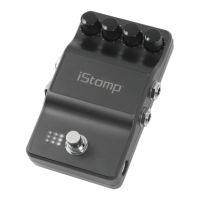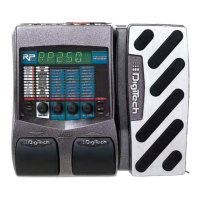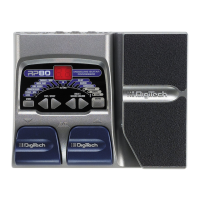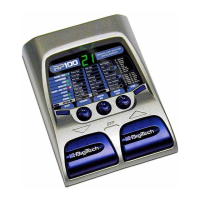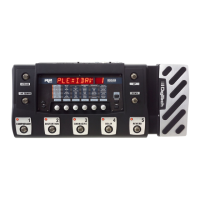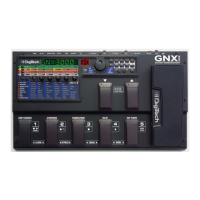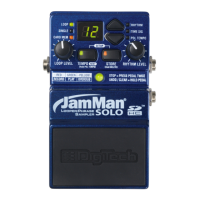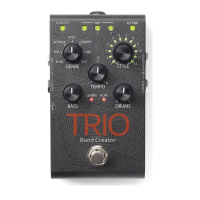56
Delays
Delay is an eect that records a poron of the incoming signal, and then plays it back a short me later. The recording can
repeat just once or several mes. The available delay pedals are:
•Delay
(Modeled after Boss
®
DM-2 Analog Delay)
The DM-2 is a classic and standard BBD analog delay that used 4,096
stages of delay. The frequency response and noise depended upon
the delay me. The signal increasingly deteriorates with each repeat,
so as the repeats are turned up, the signal becomes less and less
recognizable and actually becomes more of an “eect” than a delay.
•DigiTech 2-Tap Delay
While most delays are derived from a signal delay with one end tap,
the 2-Tap Delay uses a single delay line, but with two endpoints that
are spaced about at dierent raos. Use this eect to add more of a
rhythmic quality to your delays.
•DigiTech Analog Delay
The analog delay produces delays that were derived from ”BBD” analog
delay chips. The BBD chips were the rst ways to produce delay aside
from the costly tape delays. The delay sound was not HiFi but was
reminiscent of the original signal and quickly became a cornerstone to
modern guitar sounds due to their warm qualies.
•DigiTech Digital Delay
A digital delay can be called a perfect representaon of your guitar’s
signal. Desired for their brilliant qualies, digital delays have virtually
no noise and a full frequency response.
•DigiTech Lo Fi Delay
The Lo Fi delay is an analog delay with a severely limited frequency
response, producing an even grungier delay eect.
•DigiTech Modulated Delay
A modulated delay is a digital delay with chorus added to the delays to
produce a wider sounding stereo delay.
•DigiTech Pong Delay
A pong delay’s repeats jump from side to side and requires a stereo
setup to fully hear the eect.
•DigiTech Reverse Delay
The Reverse Delay samples the guitar’s signal then plays the delayed
signal backwards. Reverse delay used to be a studio trick, but now
with modern technology it exists in a stompbox!
•DigiTech Tape Delay
The tape delay eect produces a warm tone by liming the frequency
response and adding the distoron that exists in a tape delay.
•Echo Flex
(Modeled after Maestro EP-2 Tube Echoplex)
The Echoplex is the standard to which all analog delays are judged.
The Echoplex was the rst widely used tape delay and had a tone all
it’s own. The Echoplex can be heard on many rockabilly, surf, country
and rock tracks.
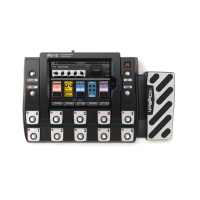
